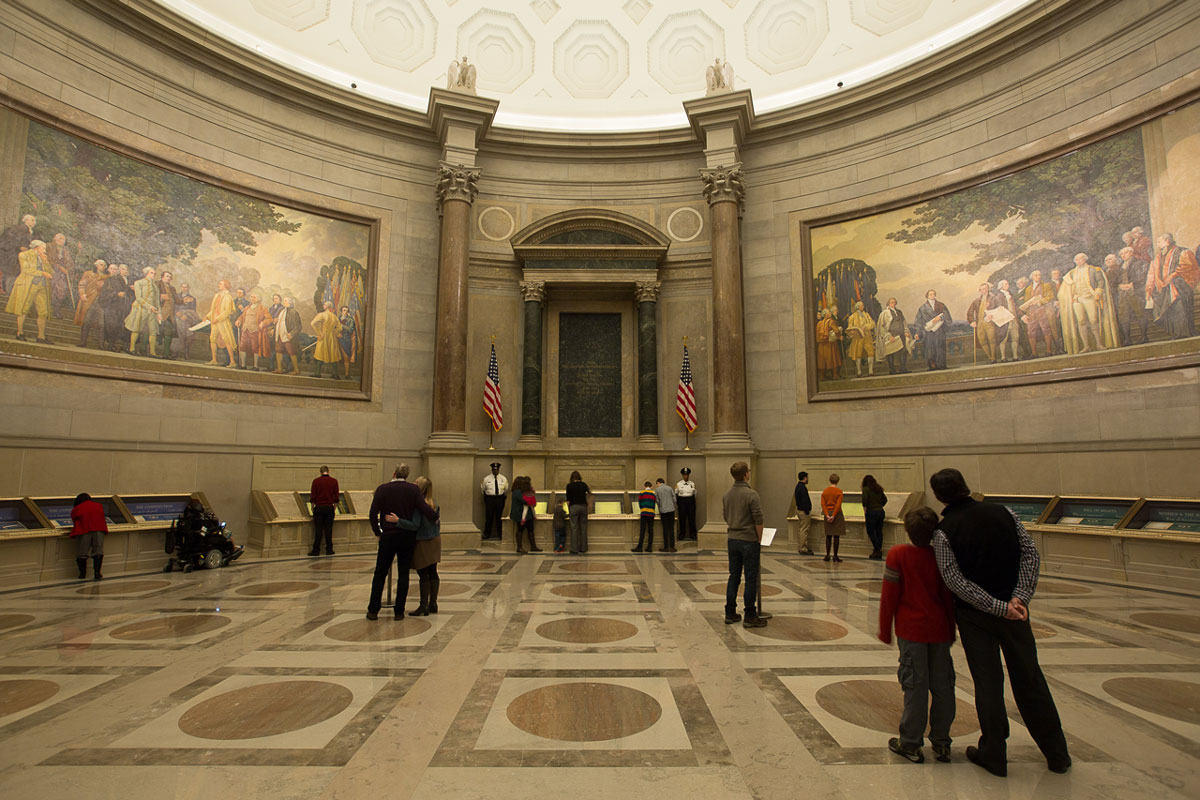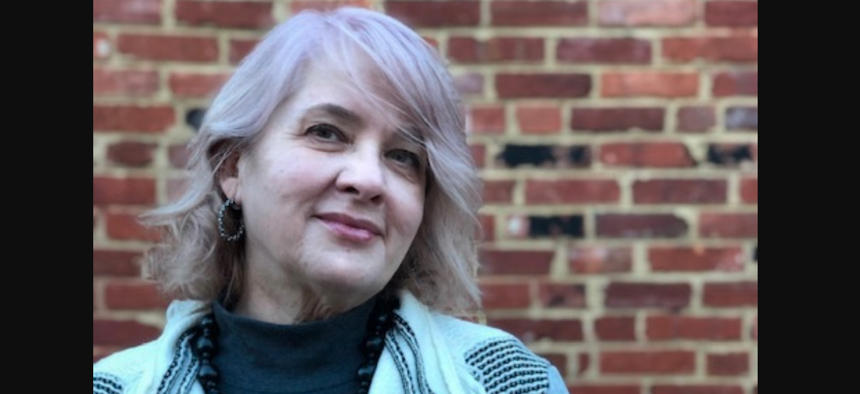Pamela Wright On Leading Digital Innovation at the National Archives
“Do not fall for the stereotype that government work is sleepy, bureaucratic paper pushing,” she says.
Pamela Wright was installed as the first chief innovation officer at the National Archives and Records Administration in 2012 and has been leading the agency’s digital transformation effort since.
“People may think that when you work at an agency, you have the same job for all those years. That has not been the case for me,” said Wright, who started at NARA in 2001 as an archives specialist. “I have had the opportunity to work on a wide range of projects—from processing textual records in the stacks to launching collaborative projects with emerging technologies”
She said the silver lining of teleworking during the coronavirus pandemic is that her staff has been able to tackle digital projects. For example, employees who couldn’t do their normal jobs due to telework made over 5,000 documents related to Black history more accessible in its online catalogue.
Government Executive interviewed Wright about her tenure at NARA, management style, shift to remote work during the pandemic and advice for aspiring civil servants.
What accomplishments are you most proud of since becoming NARA’s first chief innovation officer?
The accomplishments I am most proud of are due to collaborating with many employees across our agency. The open government concepts of transparency, collaboration and participation, and the support of our visionary archivist of the United States, have driven much of the best work of my career.
At the National Archives we are charged to preserve and provide access to the permanent records of the federal government. So I am proud that we have developed a standardized, centralized online catalog that provides information for over 95% of our records. This has required decades of work from hundreds of employees who we have trained to provide archival description and contextual metadata for our records. Providing this information online gives the public more access to the permanent records of the federal government than ever before.
And because the data is centralized and standardized, it is reusable on other platforms. I am proud of the work we have done to make NARA the largest contributor to the Digital Public Library of America. I hired NARA’s first Wikipedian-in-Residence and today our records receive billions of views on Wikipedia. We are on dozens of other platforms as well, and this means that people who may never be able to come to our buildings, who may never visit our websites, will see our records on the websites they like to visit.
I am proud of working with other agencies like the Smithsonian and the Library of Congress on digital projects like History Hub, a digital consultation platform, as well as working together to sponsor DPLAfest. I have developed an enduring relationship with our colleagues at the Library and Archives of Canada, who have modeled their crowdsourcing work on our groundbreaking citizen archivist and Innovation Hub programs.
I think one of my biggest contributions to changing the culture of the agency was leading the development of social media over the past decade. Today we have hundreds of employees from units all across our agency working on dozens of social media projects on a variety of platforms. We went from a culture that included a great deal of fear to a culture of empowerment during the course of our social media efforts.
When I took over the catalog in 2005, we had around 150,000 digital copies of our records attached to our descriptive information. The idea that the public wanted to see digital copies of the records, not just read about the records they could come to the buildings to view, made quite a stir in the archival community at the time. Now it’s a common practice and I’m proud of our role in informing digital access practices in archives. Today we have 120 million digital copies online and we are working toward a goal of 500 million by the end of fiscal 2024. We hold a total of 13 billion pages of records, so I am eager to get to our first billion online—and then we just have 12 more to go.
I have been and continue to be responsible for pushing the envelope on numerous technologies at NARA, including collaborative digital platforms, [application programming interfaces] and [artificial intelligence] projects, but I am most proud of working with employees to make our agency’s culture more transparent, participative, and collaborative. I was recently appointed to serve on the Archivist’s Task Force on Racism and I am sure the work we do on this project will be one of my proudest accomplishments.
How would you describe your management style?
Continually evolving.
A couple of years ago, I read [the book] Radical Candor, and it had a real impact on me and how I talked with my staff. The importance of an employee being able to say, “I disagree. You are about to walk off a cliff and here’s why” is critical. The nature of hierarchy interferes with that process, so you have to be explicit about this with your team. They need to know it is OK to disagree. Our success depends on it. This takes an investment in building trusting relationships with staff. And I have a brilliant team. I benefit so much from their expertise and perspectives. We’re truly better together.
Also, I have learned that some people will literally work themselves to death. Or at least to sickness. As a manager, you need to be aware of that and constantly talk with staff about their workload, how they are feeling in general and how we can prioritize the work so that there is balance in their lives. There is a stereotype of government workers as slackers, but that is emphatically not true in my experience.
It has been very helpful to consciously listen with curiosity. It’s easy to assume that you know where the other person is coming from when you have been working with them for many years. But I have been trying to catch myself when I am assuming I know, and I have stopped the conversation to ask the person why they are saying something, what are their motives, what do they hope to accomplish in the larger picture. The goal in these questions is to really understand the other person. This simple effort reveals all kinds of information that you can be blind to if you think you already know the answer.
Finally, I am inherently motivated by our agency’s mission and strategic goals. I reference those goals in my all-hands meetings with staff and my weekly meetings with managers. All kinds of new projects and issues pop up over the course of the year, and we accommodate those, but we keep our eyes on the prize. This is how we have been able to meet our goals year after year.

How has the coronavirus pandemic changed your workforce operations and the nature of your work?
The silver lining of the pandemic is that it has pushed digital projects to the top of the list for many employees who would have otherwise been working offline. As soon as we realized that most employees would be working remotely, we put our training into high gear and provided classes tailored to our employee community to add tags, transcriptions and notes to our online catalog. The response from our employees has been amazing. During the pandemic, they have contributed thousands of transcriptions, tags and notes to the catalog, fulfilling our strategic goal to “make access happen.” And they’re still going.
The public have also increased their contributions to the catalog, since we are all stuck at home and need interesting work to do. Today, we have over one million pages transcribed and over 2.5 million tags in the catalog.
Many of my staff already teleworked to some degree prior to the pandemic, so the switch to full-time remote work has not been a big leap. However, working at home while your entire family is also at home is new for everyone and can take a toll on staff. The leadership at NARA is mindful of this and we are supporting as much flexibility as possible to help staff juggle all of their responsibilities.
For many years we have been saying that the future is digital and it is clear that the future is now.
What has made you stay at NARA for almost 19 years?
People may think that when you work at an agency, you have the same job for all those years. That has not been the case for me. I have had the opportunity to work on a wide range of projects, from processing textual records in the stacks to launching collaborative projects with emerging technologies. I have had the opportunity to represent our agency around the world and to work with colleagues who are smart, experienced and eager to fulfill our mission.
One of the joys of working here for a long time is that I get to see the culture move forward as we complete projects and move to a more open and innovative environment. I get to see long-term projects bear fruit that were not even anticipated at their launch.
What advice do you have for recent college graduates or young adults considering a career with the federal government?
If you are ambitious and crave new challenges, there are jobs in the government for you. Do not fall for the stereotype that government work is sleepy, bureaucratic paper pushing. When you first get into government, you have the advantage of a fresh eye. People get used to how things are done, they stop questioning, and that can lead to inefficient, outdated processes. Question processes that don’t make sense to you and be prepared to propose alternatives. All government agencies are being required to be more efficient and effective every year and your ideas can help make that happen. Think of all of your work from the viewpoint of those we serve. How does the work you do best serve the people? Let that question guide your work and you will find an exciting career in government.








